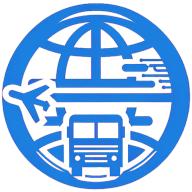6 Tips for Managing Multiple Reverse Logistics Providers
Navigating the complexities of reverse logistics can transform a supply chain into a well-oiled machine. By mastering the art of managing multiple providers, businesses can ensure quality, efficiency, and customer satisfaction. This guide provides actionable tips to harmonize provider coordination and elevate your reverse logistics strategy.
- Implement Consistent Quality Feedback Loops
- Centralize Communication Channels
- Standardize Processes and Systems
- Identify and Prioritize Provider Strengths
- Set Clear Performance Metrics
- Regularly Review and Optimize Processes
Implement Consistent Quality Feedback Loops
Implement consistent quality feedback loops with standardized evaluation metrics across all providers. In our flooring business, we developed a simple 5-point scoring system for product returns and replacements that focuses on timeline adherence, communication quality, and documentation accuracy. Each provider receives monthly performance feedback with specific improvement recommendations. This approach transformed our previously contentious returns process into a collaborative relationship where providers proactively suggest efficiency improvements. The key is maintaining identical expectations across partners while acknowledging their unique challenges. When providers understand they're being evaluated fairly against consistent standards rather than each other, the competitive dynamic shifts from defensive to collaborative improvement.

Centralize Communication Channels
To effectively manage multiple reverse logistics providers, it is crucial to centralize communication channels. This ensures that all parties involved are on the same page and reduces the chances of miscommunication. By having a single platform for all interactions, it becomes easier to track progress and address issues as they arise.
Additionally, centralizing communication allows for faster decision-making and more streamlined operations. Start centralizing your communication channels today to improve efficiency and collaboration.
Standardize Processes and Systems
Standardizing processes and systems across all reverse logistics providers is essential for efficient management. When each provider follows the same procedures, it simplifies coordination and reduces the potential for errors. This uniformity helps in maintaining consistent quality and service levels.
Furthermore, standardized systems make it easier to train new team members and integrate new providers when needed. Implement standardized processes and systems now to foster a more cohesive operation.
Identify and Prioritize Provider Strengths
Identifying and prioritizing the strengths of each reverse logistics provider can greatly enhance your overall logistics performance. Understanding what each provider excels at allows you to allocate tasks more effectively, ensuring that each part of the process is handled by the most capable provider. This approach not only maximizes efficiency but also leverages each provider's unique strengths to your advantage.
Analyzing and prioritizing provider strengths can lead to a more robust logistics strategy. Focus on identifying and utilizing provider strengths to boost your logistics performance.
Set Clear Performance Metrics
Setting clear performance metrics is vital in managing multiple reverse logistics providers. Performance metrics provide a clear benchmark for evaluating each provider's efficiency and service quality. With well-defined metrics, it becomes easier to identify areas of improvement and hold providers accountable.
This systematic approach ensures that all providers are working towards the same goals and standards. Establish clear performance metrics today to ensure consistent and high-quality service from all providers.
Regularly Review and Optimize Processes
Regularly reviewing and optimizing your processes is a key element in managing multiple reverse logistics providers successfully. Routine reviews help identify any inefficiencies or areas where improvements can be made. By continually refining processes, you can adapt to changing circumstances and stay ahead of potential issues.
Optimization not only enhances current operations but also prepares your logistics network for future growth. Make it a priority to conduct regular reviews and optimizations to maintain a dynamic and effective logistics strategy.

